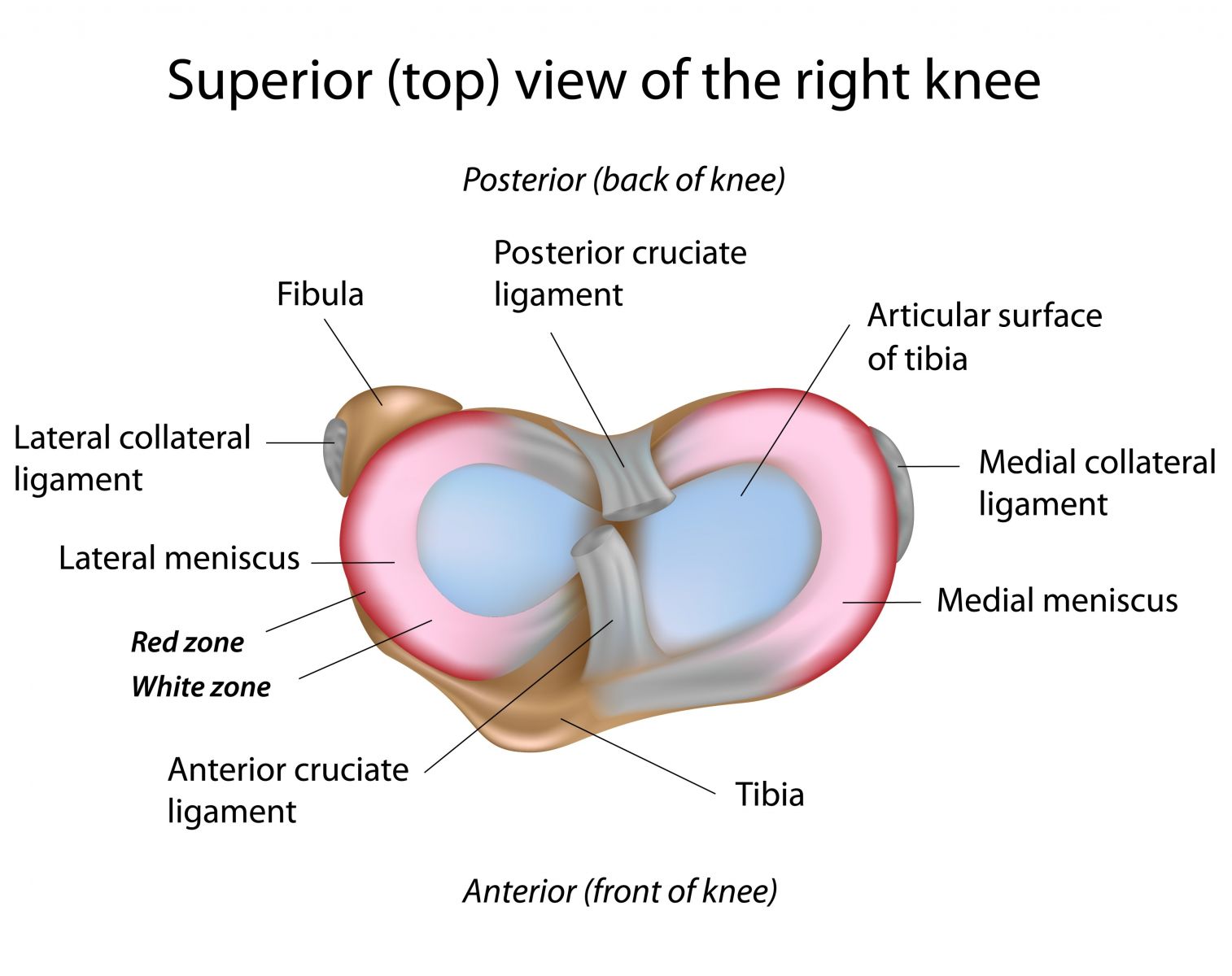
Meniscus Tear
Mar 30, 2016 by Adam Bernard MSc.PT, CG-IMS
So you tore your meniscus, ouch! This is an injury many of us have heard about but maybe don’t fully understand. The meniscus is a wedge of fibro cartilaginous material that separates the femur and tibia bones in the knee. It is mostly made up of water. The medial (inside) meniscus is “C” shaped or semi-circular and the lateral (outside) meniscus is “O” shaped or circular.

Menisci have a few major functions, which include: Load transmission, shock absorption, joint lubrication, joint stability, and they help guide movement of the knee when it bends.
A common injury in the meniscus is a tear. Tears usually occur for one of two reasons: Typically younger patients tend to tear their meniscus while rotating quickly. This may occur in sports or with certain types of jobs. Quite often other ligaments such as their ACL or MCL can be affected in the process. The second reason is degeneration of the meniscus. As we age, many of us tend to develop arthritis, which causes a breakdown of the meniscus and can lead to degenerative tears. These tears can occur with no mechanism of injury or something that seems very minor may cause the tear. This is the process we discussed in the last blog regarding knee OA and some of the potential complications.
Location, size, and the direction of the tear, are a few factors that determine a patient’s outcome. Tears that occur in the outer portion of the meniscus have a better chance of repair and recovery due to the higher vascularity (blood supply) of that region. Towards the center of the meniscus there is very little vascularization and a reduced chance of healing without surgery. As we age, this blood supply tends to decrease.
Diagnosing a meniscus tear requires a thorough physical exam and an MRI can confirm the findings. Some of the signs of a torn meniscus include: Swelling within the first 1-3 days, tenderness to touch on the inside of the knee joint, restriction in knee movement (the knee may be locking), patients often report “clicking” in the affected knee, and there is often pain with weight bearing and squatting.
Physiotherapy has an important role in rehab for a torn meniscus, whether it is surgical or not. Treatment aims to: control and eliminate swelling, increase knee range of motion, increase strength, improve gait, work on balance, and improve proprioception (the body’s perception of movement). Tears in the meniscus can lead to higher incidence of knee OA if they aren’t treated properly.
